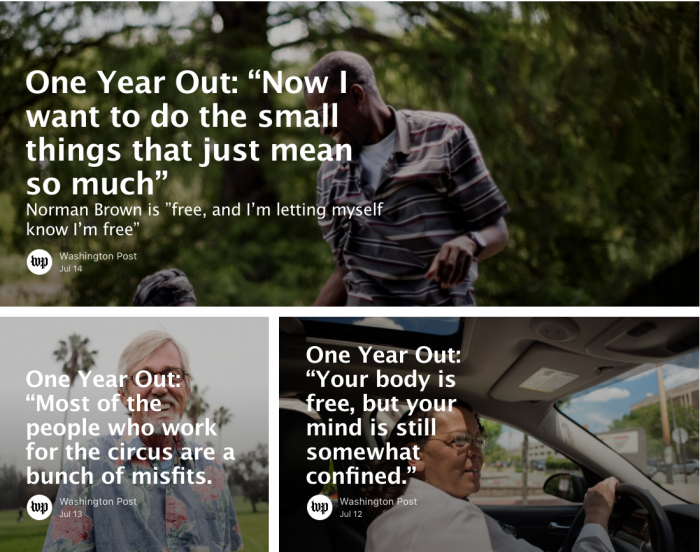
Here’s a simple tip for publishers looking looking to attract readers on Medium: Start with what already works on the platform (first-person stories), and avoid what doesn’t (straight news).
Obvious advice, perhaps, but that idea has become core to The Washington Post’s Medium strategy over the past few months. Medium, despite being a popular choice for hate reads, hot takes, and stories of corporate failure, isn’t known for being a particularly significant source of traffic. But the unique strengths of the platform, coupled with the kinds of people who read it, have made it an attractive target for publishers either way.
“Like many organizations, we realize that we have to go to our readers, so when we identify a potential community of people, the first mission is to figure out how best to serve them,” said Kayla Epstein, social media editor for the Post’s national news section. “We want to know what they want to read and see and how to engage them on a deeper level.” (It’s worth noting that the Bezos-era Post has been particularly enthusiastic about publishing directly to platforms. It was one of the few publishers to publish all of its content to Facebook’s Instant Articles, for example.)
So far, much of the Post’s Medium strategy has been focused on republishing existing content that works well on the platform. The Post saw, for example, that Medium lends itself well to stories about the social effects of technology, advice columns, and first-person accounts — all of which it’s posted. “Those are the kinds of stories we started with, but we’re selecting them very carefully based on what we think readers there want to read. We’re not just copying and pasting,”Epstein said.
The Post recently adapted “Looking for America,” a four-part series examining the state of American life, as well as profiles from its “One Year Out” project, which focuses on people pardoned by President Obama. It’s also experimented with one-off adaptions of existing stories about the 2016 conventions the trend towards retro web design, and the rise of Facebook. Each of the posts was tweaked and shortened, while also edited to maintain the elements and spirit of the original versions.
Epstein said the Post has been happy with the reader reaction. One of Medium’s big draws is its emphasis on getting users to engage with the posts they read. Medium’s highlighting feature, for example, provides feedback on which parts of a story resonated with readers. Medium also gives metrics on whether stories were actually read. (These perks are some of the same ones that have led publishers such as The Awl, Femsplain, and Pacific Standard to move entire sites to Medium’s platform.)Comments aren’t as plentiful as they might be on their original versions, but they’re typically of high quality, largely because they’re attached to user’s identities on both Medium and Twitter itself. “People definitely take a lot more time to think about and write these comments. Many of them are mini-articles in and of themselves,” Epstein said.
While the Post includes in the stories links to their full versions on washingtonpost.com, the stories are edited to stand on their own. Teasing readers to coax them to click over is a tempting tactic, but not one that was particularly effective with Medium’s userbase. “We tried teasing people to the longer pieces and people don’t really follow the links back,” Epstein said. Instead, Medium users are more likely to click over to author profiles, which list their other work and let users follow them on Medium and Twitter.
One thing that doesn’t work well on Medium is straight news coverage. The Post experimented with posting news stories to Medium, but stopped after looking at the data. The most likely explanation, according to Epstein, is that Medium is where people to go to read takes and explanations about news events, not basic reports on what actually happened.Epstein said that the Post’s short-term goal is to increase the amount of original content it posts to Medium. Its only original posts so far are the periodic posts created by the team running Pay Up, The Washington Post’s private Slack community created for women to discuss their careers and personal lives. “We’re still very much in the early days on this,” she said.